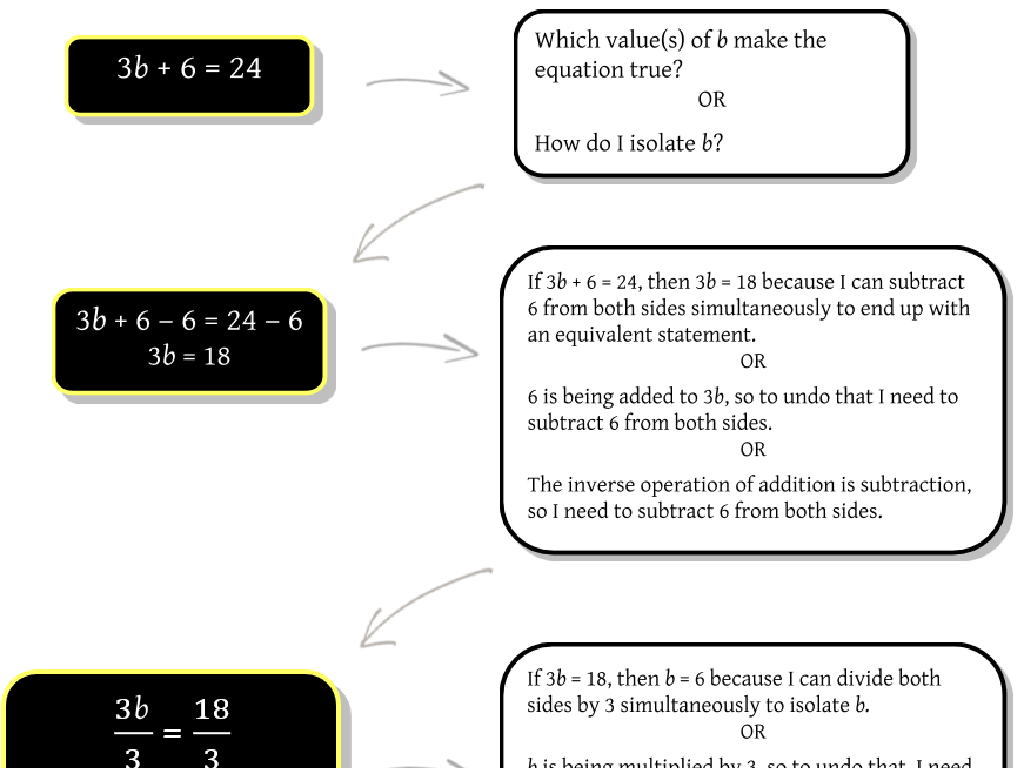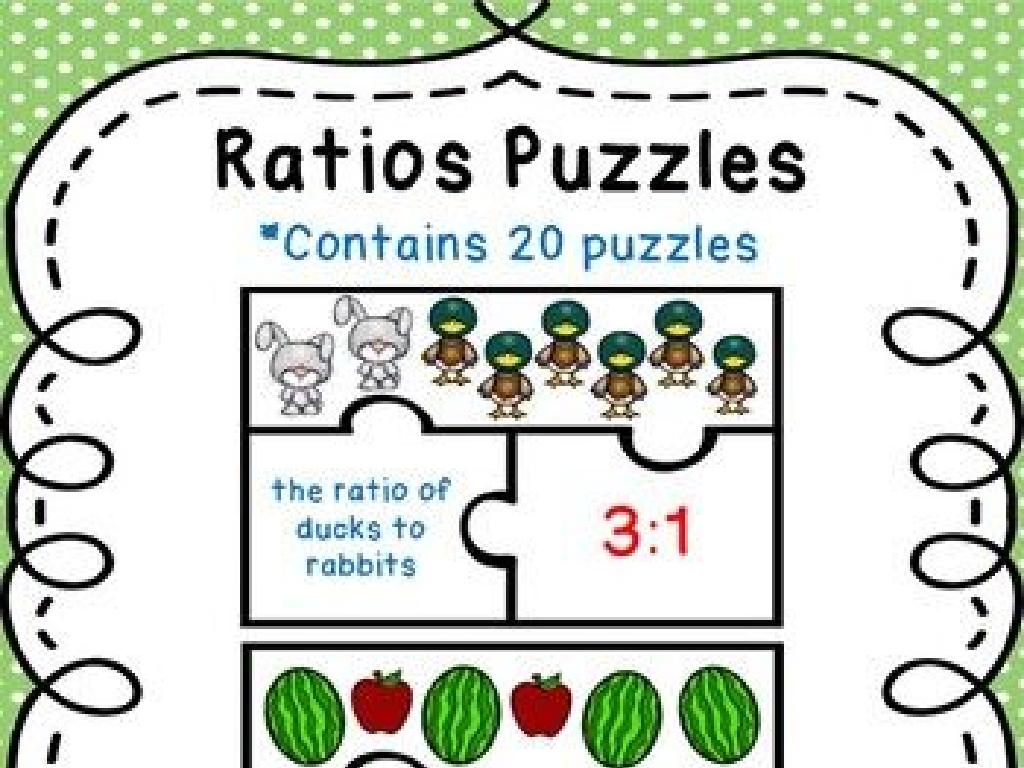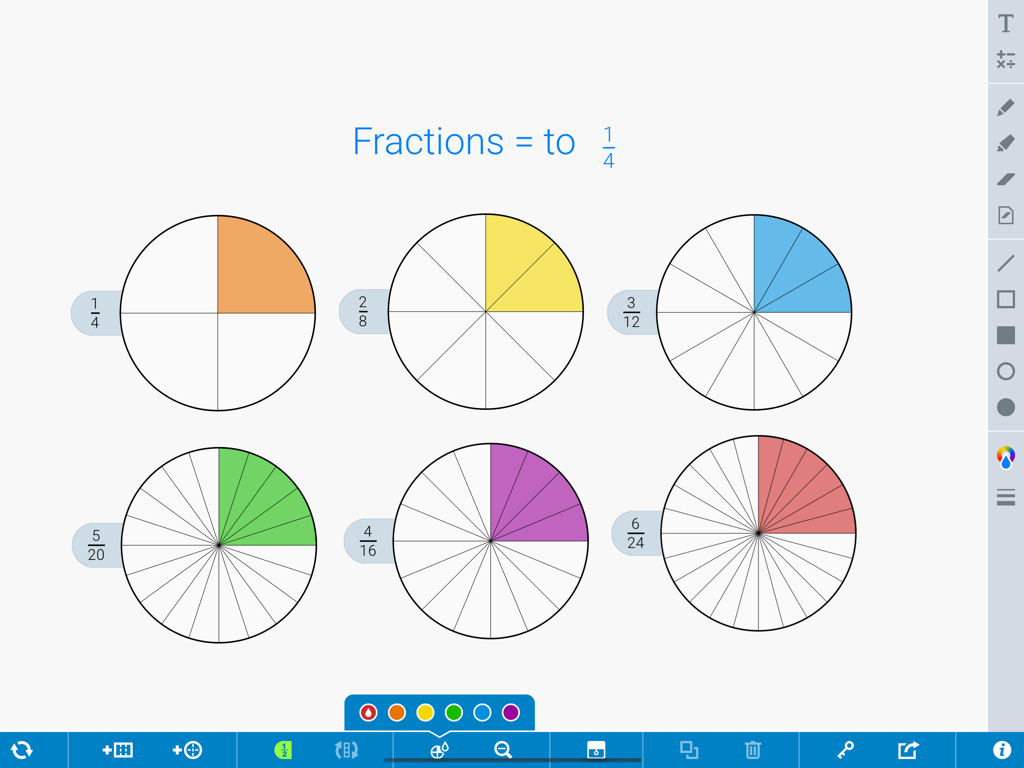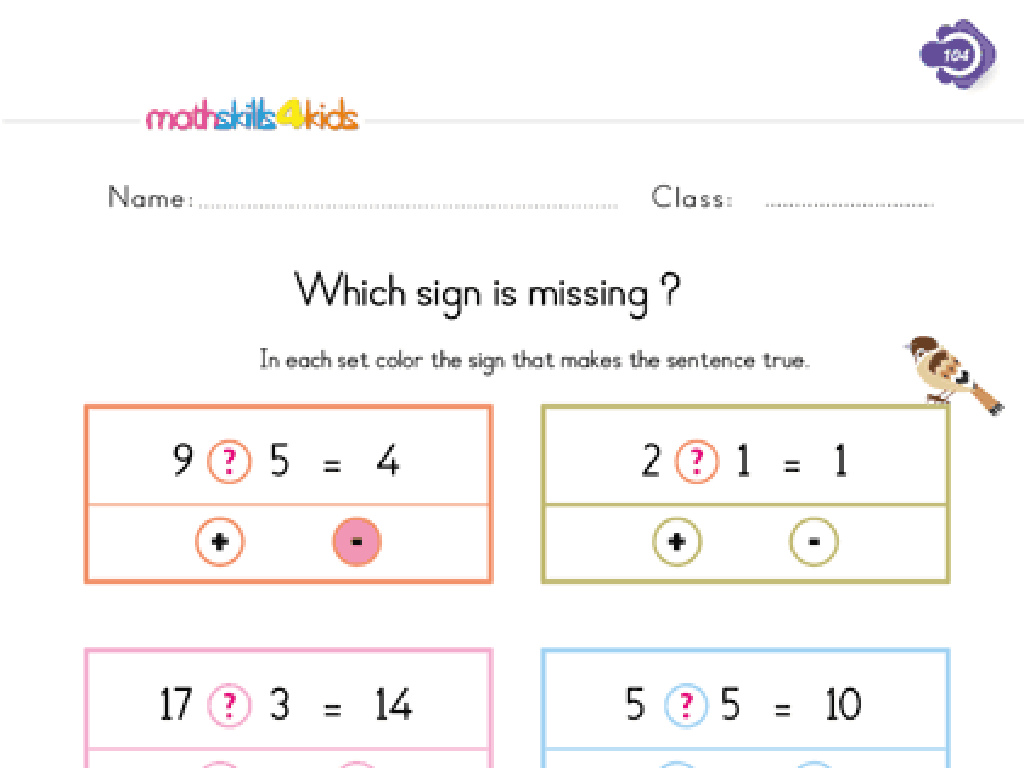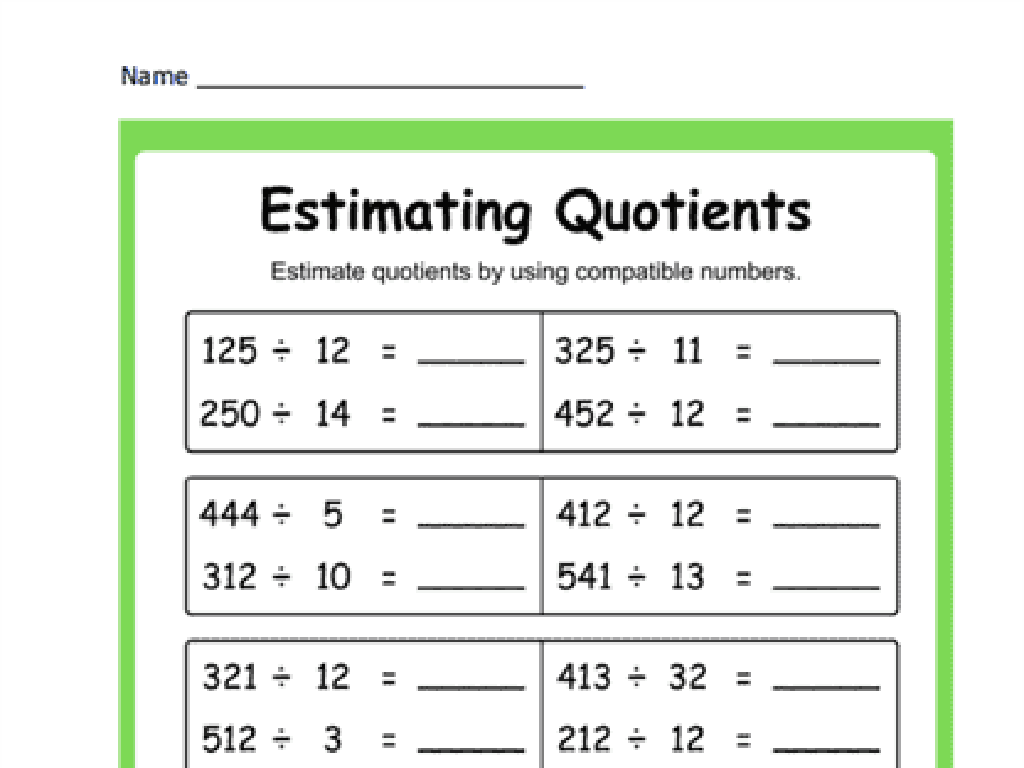Metric Units Of Length: Word Problems
Subject: Math
Grade: First grade
Topic: Measurement
Please LOG IN to download the presentation. Access is available to registered users only.
View More Content
Welcome to Measurement!
– Understanding measurement
– Measurement means finding out how long or heavy something is.
– Exploring metric units
– Metric units include meters, centimeters, and millimeters.
– Reasons we measure
– To know how much of something we have or need.
– Measuring in real life
– Like figuring out if a bed will fit in your room.
|
This slide introduces the concept of measurement to first graders, explaining it as a way to find out the length or weight of objects. Emphasize the use of metric units like meters, centimeters, and millimeters, which are standard in most countries. Discuss the importance of measurement in everyday life, such as cooking, building, and buying clothes. Provide relatable examples, like measuring the height of a plant or the length of a book, to make the concept more tangible for young students. Encourage students to think of times they have used measurement and to share their experiences.
Exploring Metric Units of Length
– Understanding metric units
– Metric units measure length, weight, volume
– Focus on length: cm and m
– Centimeters and meters measure how long things are
– Using a meter stick
– A meter stick is 100 cm long, helps us measure
– Practice with a ruler
– A ruler usually has 30 cm, good for small measurements
|
This slide introduces the concept of metric units of length to first graders, focusing on centimeters and meters. Begin by explaining that different things are measured in different ways – length is how long something is, weight is how heavy, and volume is how much space something takes up. Use a meter stick to show how long one meter is, and compare it to a ruler, which is typically 30 centimeters long. Encourage students to think about objects in the classroom that might be as long as a meter or a ruler. This visual and tactile approach helps them grasp the concept of length measurement. For homework, they could find items at home to measure with a ruler and record their lengths in centimeters.
Understanding Centimeters
– Centimeters measure length
– A centimeter is a tiny unit on a ruler
– Used for short objects
– Perfect for a pencil, a book, or your foot!
– Measuring items activity
– Let’s use a ruler to measure things in class
– Practice with real examples
|
This slide introduces centimeters as a unit of measurement for length, specifically tailored for first graders. Begin by explaining that centimeters are small units found on a ruler and are used to measure things that are not too long. Show them a ruler and point out the centimeter marks. Use relatable examples like measuring the length of a pencil, a book, or even their own foot to make the concept tangible. Organize a hands-on activity where students can practice measuring items in the classroom with a ruler, reinforcing their understanding of using centimeters. Encourage them to ask questions and assist them in reading the ruler correctly. The goal is to make them comfortable with the idea of measuring length using centimeters.
Understanding Meters
– Meters measure length
– A meter is longer than a foot
– Used for longer objects
– Doors, cars, or a bed can be measured in meters
– Like measuring a door
– How tall is a door in meters?
– Think of meter examples
– Can you find items at home to measure in meters?
|
This slide introduces meters as a unit of measurement for length, specifically for objects that are longer than what we would measure with smaller units like centimeters or inches. Explain that meters are used to measure things like doors or cars, which are too big for smaller units. Encourage the students to think of and discuss other items that can be measured in meters, possibly bringing in examples or visual aids to help. For the activity, students can be asked to find something in the classroom or at home to measure in meters, fostering practical understanding and engagement.
Comparing Lengths with Meter Sticks
– Understanding meters and centimeters
– A meter has 100 centimeters. It’s like the length of a guitar!
– Using a meter stick for comparison
– A meter stick helps us see which object is longer or shorter.
– Comparing lengths of objects
– Let’s see which is longer: a pencil or a shoe?
– Practice with real examples
|
This slide introduces students to the concept of measuring length using metric units, specifically meters and centimeters. Start by explaining that a meter is a standard unit of length and that there are 100 centimeters in a meter. Use a meter stick during the lesson to show students how to compare lengths of various objects. Engage the class by comparing common items they are familiar with, such as pencils, shoes, or books. Encourage them to guess which is longer or shorter before measuring. For the activity, students can use their own meter sticks to measure items around the classroom and record their findings. This hands-on approach helps solidify their understanding of length comparison and the use of metric units.
Understanding Metric Units with Word Problems
– When to use cm or m
– Example: Pencil length problem
– If one pencil is 7cm, how many make 1m?
– Solving problems together
– We’ll work as a class to find solutions
– Practice makes perfect
– Try more problems for homework
|
This slide introduces students to the concept of choosing the correct metric unit of length through word problems. Start by explaining that centimeters (cm) are used for small objects and meters (m) for larger ones. Use the example of the pencil to illustrate this point and engage the class in solving it together. Explain that there are 100cm in 1m, so they need to divide 100 by the length of the pencil to find the answer. Encourage participation and guide them through the process. After solving together, assign additional problems as homework to reinforce the concept. Make sure to provide clear instructions and support for students who may need extra help.
Let’s Practice Measuring!
– Measure classroom items
– Guess: cm or m?
– Is your pencil longer in cm or m?
– Actual measurement
– Use rulers for cm, meter sticks for m
– Discuss our findings
– Were our guesses correct? Why or why not?
|
This slide is for a class activity where students will engage in hands-on learning by measuring various items found in the classroom. The goal is to help them understand the difference between centimeters and meters and to choose the appropriate unit of measure for different objects. Provide a variety of items for measurement and ensure that each student has access to both a ruler and a meter stick. Encourage them to make an educated guess before measuring. After the activity, facilitate a discussion where students can share their results and reflect on their understanding of metric units of length. This will reinforce their learning and help them grasp the concept of scale and measurement.
Class Activity: Measurement Scavenger Hunt
– Find items to measure in class
– Record measurements in cm/m
– Use a ruler or tape measure for accuracy
– Share findings with classmates
– Understand metric units
– Learn the difference between centimeters and meters
|
This interactive activity is designed to help first graders understand and apply their knowledge of metric units of length in a fun and engaging way. Provide students with rulers or tape measures and instruct them to find various items in the classroom that they can measure. They should write down their measurements, specifying whether they used centimeters (cm) or meters (m). After the scavenger hunt, each student will have the opportunity to share their findings with the class, which will reinforce their learning and help them understand the practical use of measurement. Possible items to measure could include a pencil, a book, a piece of string, or the height of a table. This activity will help students differentiate between smaller and larger units and give them a sense of scale.
Celebrating Our Measuring Skills!
– Congratulations on your measuring!
– Understanding centimeters and meters
– Centimeters (cm) and meters (m) help us measure length
– Practice is key to mastery
– The more you measure, the better you’ll get!
– Keep measuring and having fun!
|
This slide is meant to congratulate the students on their hard work during the lesson on metric units of length. Reinforce the concepts of centimeters and meters, emphasizing their use in everyday life. Encourage the students to continue practicing their measuring skills outside of the classroom, as practice is essential for improvement. Remind them that learning can be fun and to try measuring objects at home for extra practice. Celebrate their achievements today and motivate them to keep learning and exploring the world of measurement.

